The Impact of Innovation
WIPO and the Sustainable Development Goals

The 2030 Agenda for Sustainable Development and its 17 Sustainable Development Goals (SDGs) is the most ambitious development agenda in human history – it is a roadmap to end poverty, protect the planet and ensure that all people live in peace and prosperity.
As a specialized agency of the United Nations, the World Intellectual Property Organization (WIPO) contributes to the SDGs by providing concrete services to its member states, enabling them to use the intellectual property (IP) system to drive the innovation, competitiveness and creativity needed to achieve these goals.
IP is a critical incentive for innovation and creativity, which in turn are key to the success of the SDGs. Only through human ingenuity will it be possible to develop new solutions that: eradicate poverty; boost agricultural sustainability and ensure food security; fight disease; improve education; protect the environment and accelerate the transition to a low-carbon economy; increase productivity and boost business competitiveness.
The WIPO Development Agenda is at the heart of WIPO's contribution to the implementation of Agenda 2030. Since its adoption in 2007, development considerations became an integral part of WIPO’s work and the development dimension of its activities and deliberations have drastically increased. The effective implementation of the Development Agenda is a key priority and a major component of the assistance WIPO can provide to its member states, within its mandate, to help achieve the SDGs.
This page outlines the various WIPO services that create the conditions for innovation, competitiveness and creativity to thrive. It also highlights examples and stories of the individuals and communities benefiting from these services.
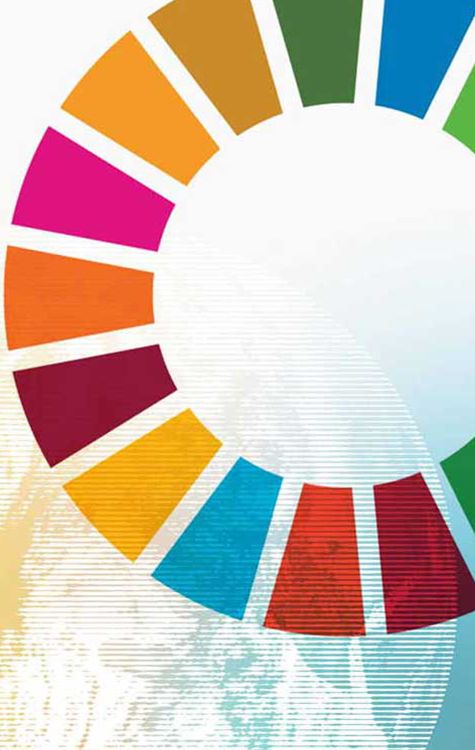
Find and share more stories of how individual inventors, companies and other organizations find solutions to social, economic, health and environmental challenges.
Find and share more stories of how individual inventors, companies and other organizations find solutions to social, economic, health and environmental challenges.
WIPO's work on
the SDGs
WIPO's Development Agenda
guides our contribution to
the implementation of
Agenda 2030

SDG 9 is at the core
of our mission to
lead the development
of the international
IP system for the
benefit of all
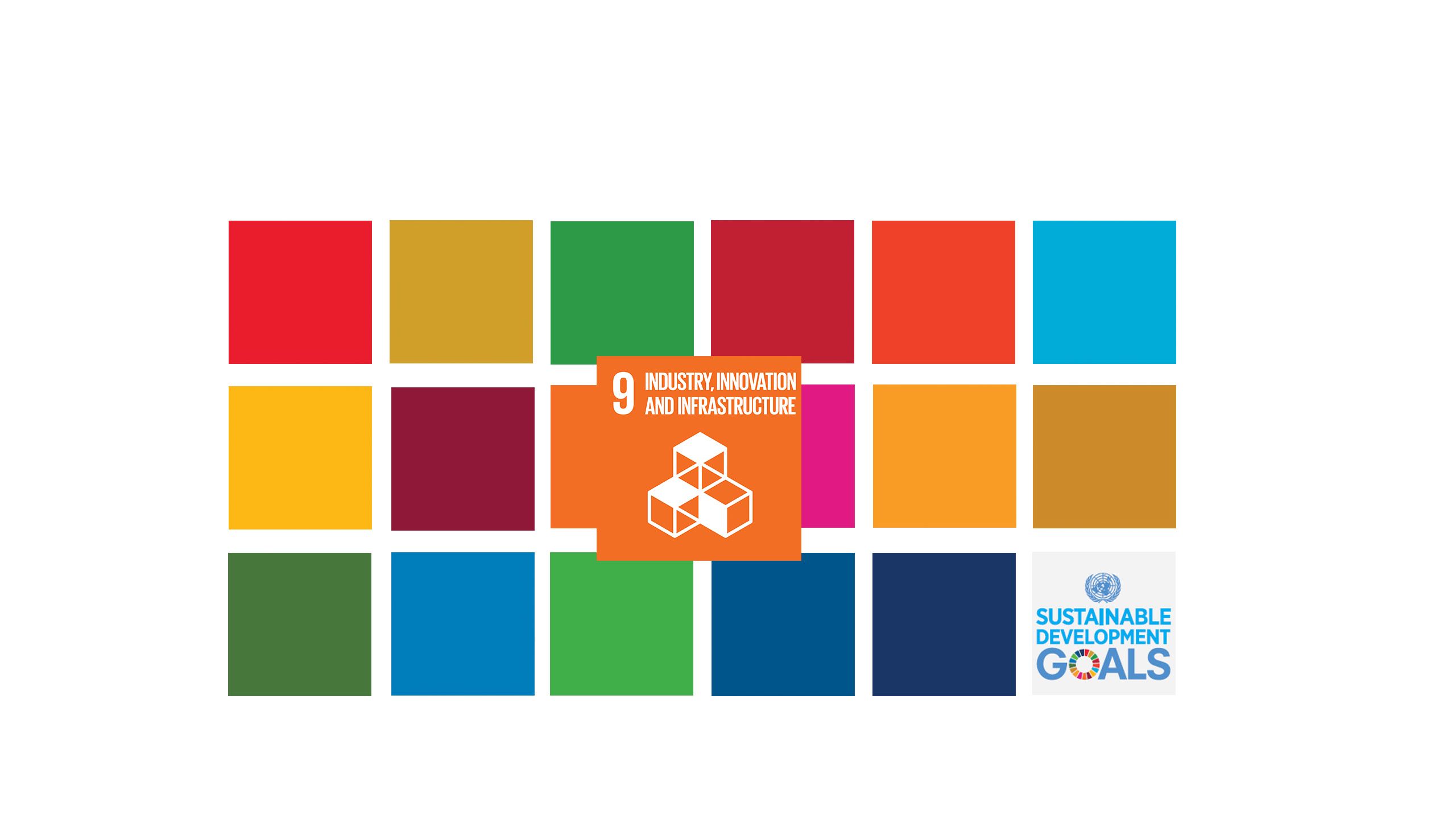
Innovation is also
essential to achieve
SDGs 2, 3, 6, 7,
8, 11 and 13
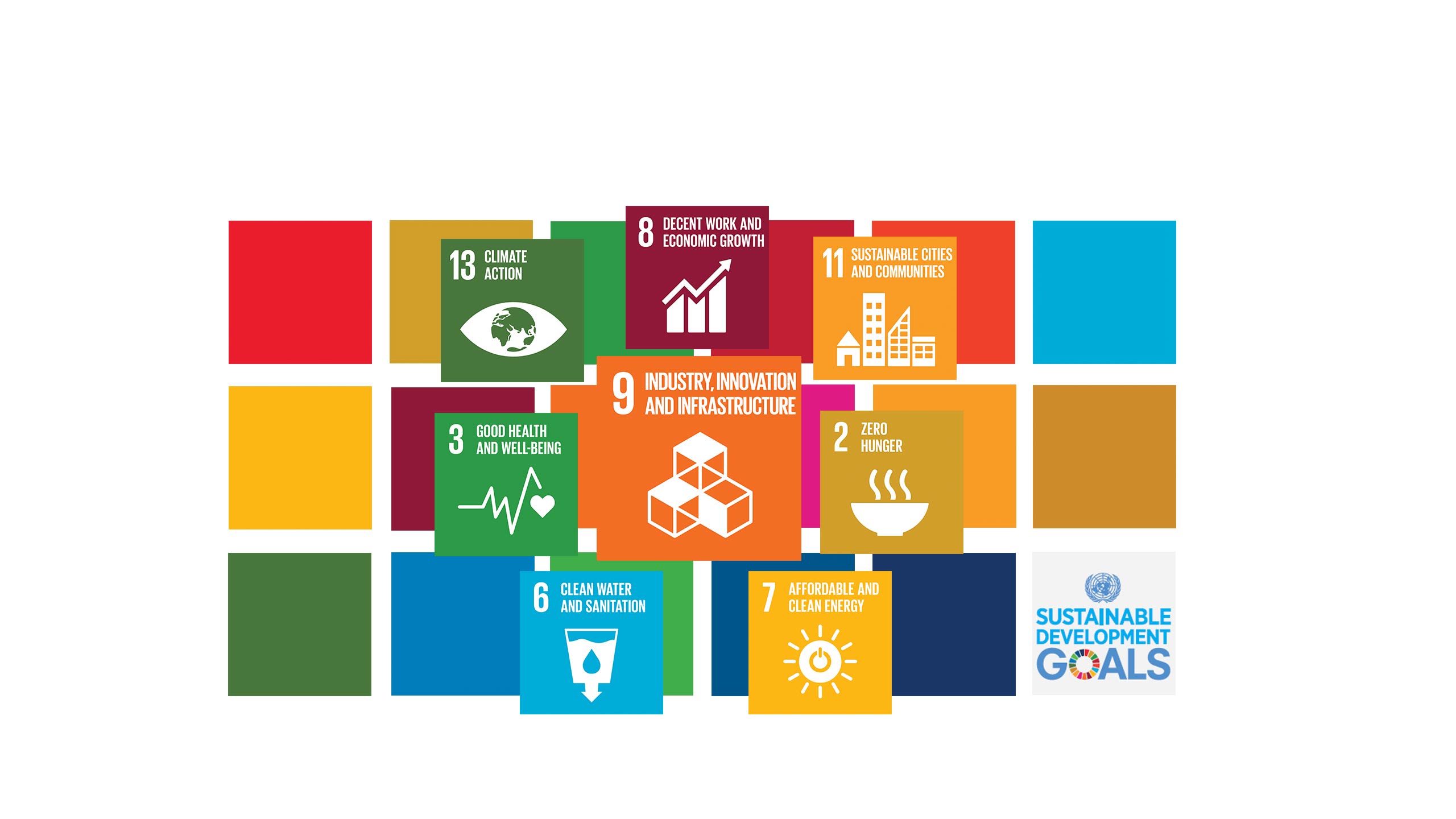
An innovation policy
framework can assist
in achieving most
other SDGs
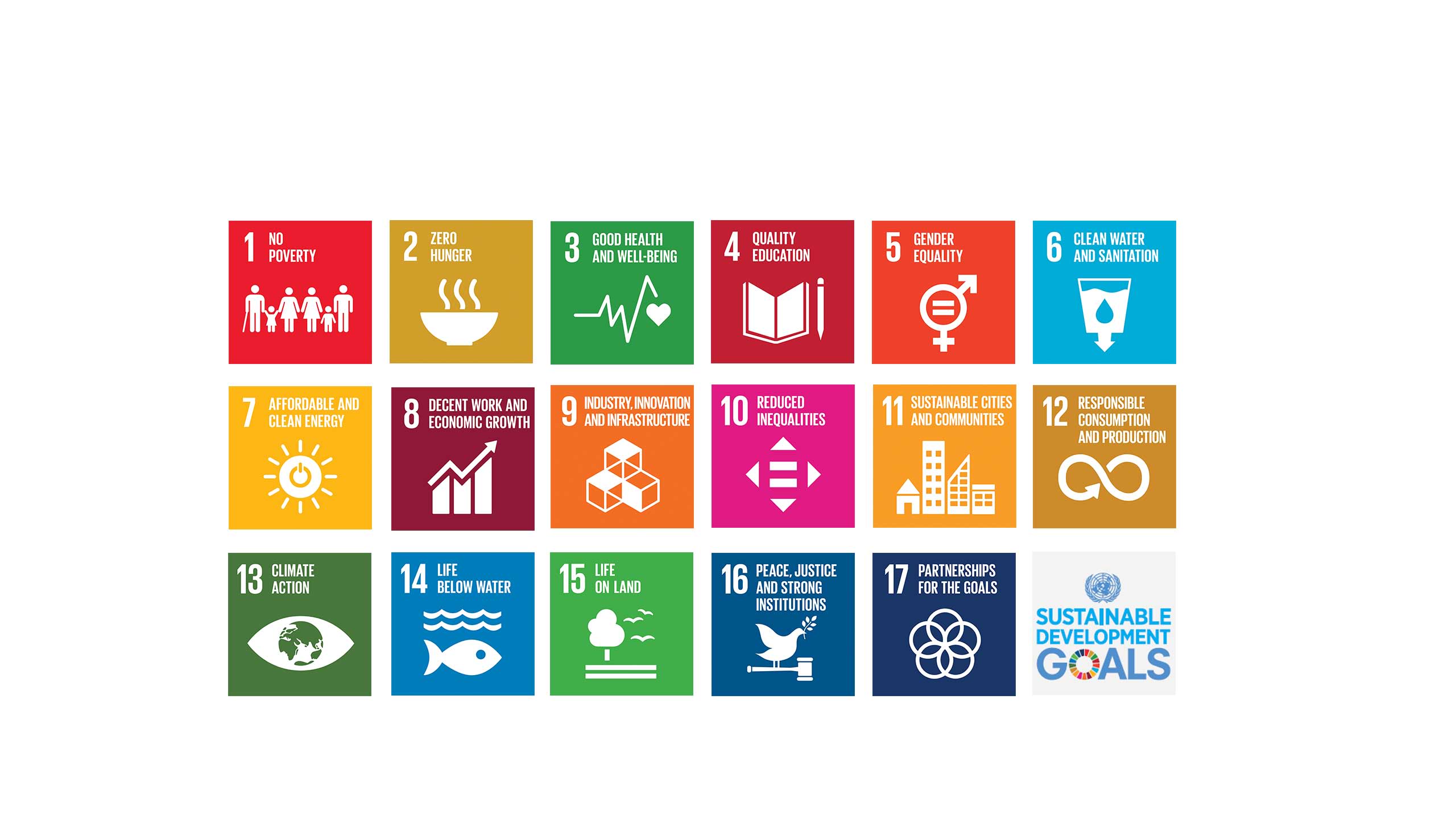
Innovation for nations
A nation’s ability to innovate, attract foreign investment, and develop valuable businesses offering products and services that can compete on a global scale is intrinsically linked with intellectual property (IP) and its supporting innovation ecosystem.
Appropriate IP policies, an effective legal framework, robust operational infrastructure and effective education are key elements of this innovation ecosystem that leads to an innovative and competitive nation.
Analyzing innovation ecosystems
WIPO contributes to a deeper understanding of the workings of an effective innovation ecosystem through a number of analytical reports.
Video: The Global Innovation Index helps governments benchmark their innovation performance and better understand how to stimulate innovative activity. The World Intellectual Property Indicators analyses IP activity and related trends around the globe, enabling policymakers to take decisions accordingly. The World Intellectual Property Report explains, clarifies and contributes to policy analysis relating to IP with a view to facilitating evidence-based policymaking.
Constructing an IP ecosystem
WIPO also offers a range of services to help nations build this innovative IP ecosystem. National IP strategies encourage and facilitate the effective creation, development, management, and protection of IP at national level. This strengthens a country's ability to generate economically valuable IP assets.
WIPO has developed a methodology for the development of National Intellectual Property Strategies. The resulting strategies address all areas of innovative activities in a country.
Legislative work and support
A well-developed IP legal framework is the cornerstone of an effective innovation ecosystem. Not only that, but it is the foundation of an enabling environment that encourages entrepreneurs and businesses to invest in developing solutions to the technological challenges facing humanity and creators to develop exciting new forms of cultural expression.
WIPO plays a major role in the development of the international IP legal framework through administering 26 international IP treaties. WIPO also provides legislative advice on ways to update national IP laws to ensure they keep pace with the realities of a rapidly evolving, technology-driven world and legal best practice – all keys to the achievement of the SDGs.
Supporting judiciaries
The judicial administration of IP plays an important role in innovation. Given that the speed of technological innovation tends to outpace legislative and policy responses, judiciaries are often on the front line of confronting novel legal questions that may significantly impact innovation stakeholders not only in their own countries, but also beyond national borders.
The WIPO Judicial Institute provides a global platform for the exchange of information among judicial peers and carries out judicial capacity-building activities. This facilitates the sharing of experiences and good practices that contributes to the balanced and effective judicial adjudication of IP disputes.
Building infrastructure
In order to support national innovation and to participate effectively in the global IP system, national IP institutions need modern tools to provide efficient services to their clients.
84 IP offices from developing countries use WIPO’s Industrial Property Administration System to automate their IP business and administrative processes. In addition, WIPO’s Centralized Access to Search and Examination and Digital Access Service systems enable the secure electronic exchange of patent-related documents, thereby improving the quality and efficiency of services.
Leveraging new technologies
In the global innovation economy, demand for IP rights is rapidly increasing and becoming more complex. Artificial intelligence (AI) has the potential to revolutionize the services provided by IP offices worldwide and help them deal with the challenges presented by this evolving demand.
WIPO leads and enables cooperation amongst IP offices in this area and develops AI tools to assist in IP administration and service delivery.
The Global Brand Database's image search, with enhanced computer vision powered by AI, makes it faster and easier to establish the distinctiveness of a trademark in a target market.
As a leading organization creating AI applications for innovation, WIPO also offers state-of-the-art translation software that reduces the language barrier involved in understanding and transferring technologies.
WIPO Translate features cutting-edge neural translation technology and has been shown to out-perform other web-based products using AI.
Training and further education
In addition to the necessary IP policy, legal and technical infrastructure, it is essential that government officials, researchers and business people be aware and knowledgeable about the use and administration of the IP system.
As the core entity at WIPO for the delivery of IP education, training and human capacity-building services, the WIPO Academy provides easy access to higher education to tens of thousands of participants each year. The Academy offers free and/or affordable face-to-face/online courses on a range of IP-related topics in all official UN languages as well as in several other languages. Courses are offered in particular to participants from developing countries, least developed countries (LDCs), and countries with economies in transition. The WIPO Academy also assists member states in establishing their own self-sustaining IP training institutions focused on specific national goals and priorities.
Dispute resolution
By offering options outside the courts, Alternative Dispute Resolution (ADR) such as mediation and arbitration can empower parties in an IP dispute by enhancing their control over the dispute resolution process. The consensual nature of the process often results in a less adversarial experience, allowing parties to solve disputes in a less acrimonious manner. In offering these benefits, ADR contributes to the optimal development and use of IP assets in the economy. To a certain extent, it also helps unburden national court systems.
WIPO’s Arbitration and Mediation Center offers mediation, arbitration and domain name dispute resolution services to facilitate time- and cost-effective dispute resolution between private parties.
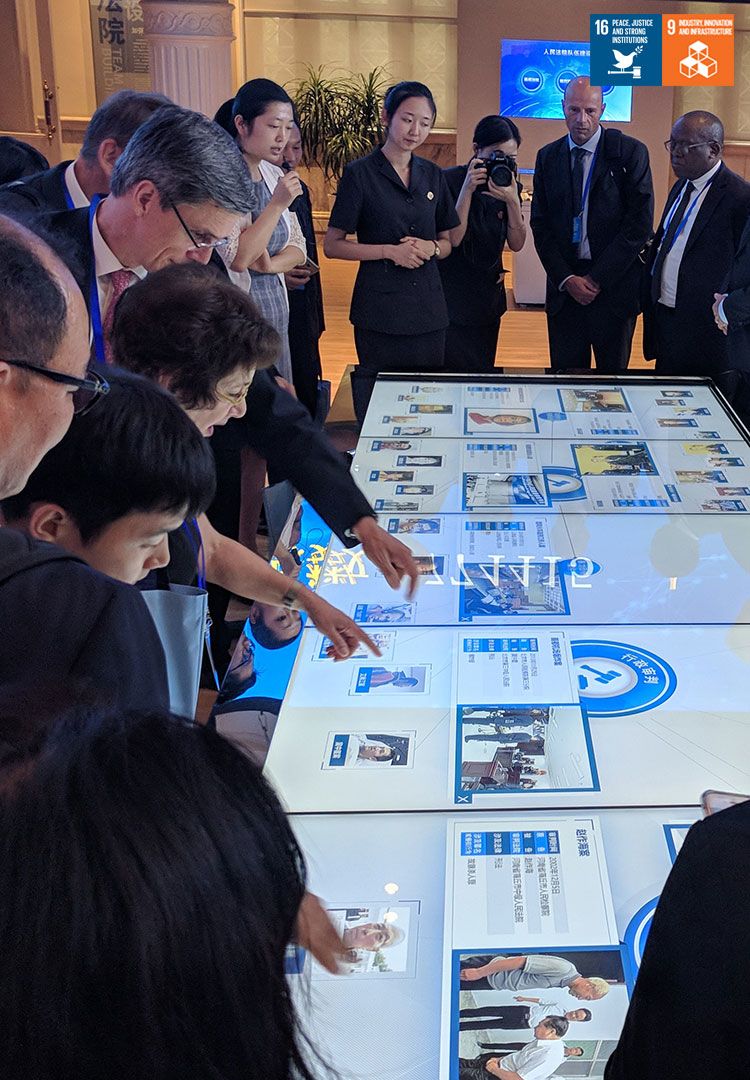
In August 2018, WIPO's inaugural Master Class on IP Adjudication was organized in collaboration with the Supreme People’s Court of the People’s Republic of China. Thirty IP judges from 15 countries exchanged expertise on common questions and difficulties that transcend borders. Read more about the Master Class. (Photo: WIPO/Zebarjadi)
WIPO' s inaugural Master Class on IP Adjudication organized in collaboration with the Supreme People’s Court of the People’s Republic of China was held in August 2018. (Photo: WIPO/Zebarjadi)

An IP office is a government institution that exists to facilitate business. WIPO supports IP offices to modernize their operations and provide better support to local business. Find out more. (Photo: Getty/Cecilie_Arcurs)
WIPO supports IP offices to modernize their operations. Find out more. (Photo: Getty/Cecilie_Arcurs)

Fashioning change in El Salvador
El Salvador is home to a remarkable variety of traditional crafts, from delicate leatherwork to dazzling indigo dyes. However, a lack of job opportunities in the Salvadoran countryside has meant that many rural women – often the keepers of these traditional crafting skills – are forced to find work in cities and overseas. Separated from their families and heritage, their unique skills are in danger of disappearing.
Seeing the effects of this separation firsthand, Salvadoran artist Lula Mena decided to act. In 2011 she began working with rural women to produce high-quality jewelry using traditional and sustainable methods. From a team of just six women, Lula Mena® now employs 100 women, whose jewelry, textiles and other handicrafts are sold in 15 countries. The company’s combination of social responsibility and business acumen received widespread recognition in 2019, when it was selected by Forbes Central America as one of its 30 Promising Businesses and won the international FIRST Responsible Capitalism Award for SMEs.
Central to this success has been Mena’s understanding of the importance of intellectual property, which is used to protect not only the company’s designs and products but also the women and families that depend on those designs and products for an income. As a result, Lula Mena® has become a respected brand in El Salvador and further afield not just for its fusion of traditional techniques with modern designs, but for its empowerment of the country’s rural women and its revival of their traditional craft skills. Lula Mena® serves as a reminder that responsible fashion is always in style.
Video: How Lula Mena created a fashion business empowering women in rural El Salvador and helping them gain financial independence.
Video: How Lula Mena created a fashion business empowering women in rural El Salvador and helping them gain financial independence.
(Photo: Courtesy of Lula Mena)
(Photo: Courtesy of Lula Mena)
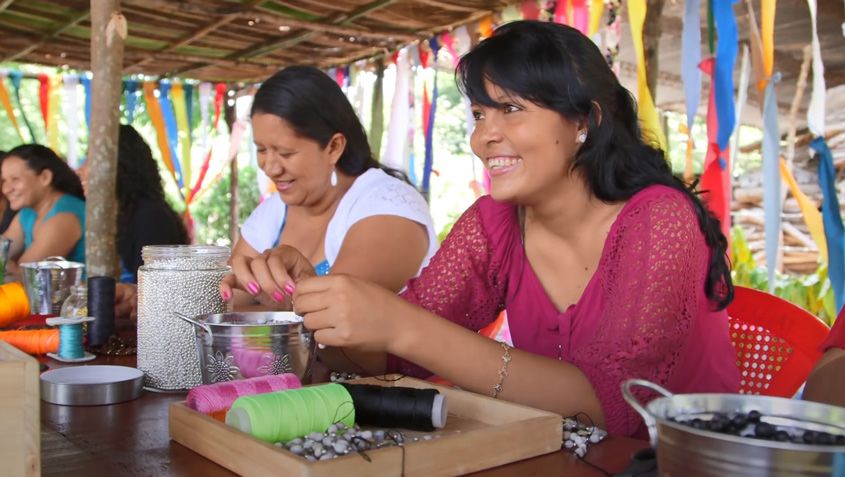

Inventions and innovation
Innovation can be a tremendous catalyst for economic growth. Patents are critical to sustainable innovation and they can represent the first step towards establishing a successful enterprise, as well as open the doors to further investment and business opportunities.
Improving access
The patent system should be as widely accessible as possible. However, the costs of obtaining appropriate patent counsel are a barrier to wider use of the system.
Therefore, inventors attempt to navigate the patent system on their own and sometimes fail for procedural reasons that have nothing to do with the quality of their inventions. Consequently, applications can be rejected, even if some of the underlying innovations may ultimately prove important.
WIPO's Inventor Assistance Program (IAP) helps foster innovation and reduce inequalities by making the patent system more accessible to inventors and small businesses in developing countries. The IAP matches financially under-resourced inventors in participating countries with volunteer patent specialists who provide legal assistance with patent applications.
Improving drafting skills
Filing a high-quality patent application is a first step in actively using and benefitting from the patent system. Yet drafting a high-quality patent application is a skill-based competency that can only be developed through practice. In many developing countries, qualified IP practitioners who can advise inventors and scientists in protecting their innovation are scarce.
WIPO's Patent Drafting Training Program enhances capacity and skills so that inventors can protect their inventions in a manner that meets their business needs. The Program contains progressive and flexible modules that can be adapted to specific country needs and includes many practical drafting exercises.
University knowledge
The knowledge and technology generated in universities and research centers can have immense economic and social benefits. For these great ideas to flourish, they need to make their way from academic and research labs into the hands of the consumer.
WIPO helps universities and research centers understand the IP issues surrounding the creation of new technologies and knowledge transfer, which in turn helps get discoveries from the lab to the marketplace.
Technical assistance
WIPO works to assist all nations, and in particular developing countries and LDCs, to use the patent system. Our patent-related technical assistance includes training for IP office staff and patent specialists, legislative advice, loaning of experts, and supply or loaning of IT equipment.
WIPO's legislative and technical advice helps foster innovation and reduce inequalities by assisting countries to design a patent system that better fits their national development programs and plans.
International cooperation
The costs of prosecuting and granting patents can be high for both national IP offices and inventors. Overcoming this barrier is crucial to encouraging innovation and use of the IP system.
WIPO’s Patent Cooperation Treaty (PCT) System fosters and supports innovation by making it easier for inventors, researchers and businesses to protect their inventions internationally so that their businesses can develop and drive national economic growth. 90% discounts on certain fees for international applications are offered to individuals from developing countries and any applicants from LDCs.
Traditional knowledge and genetic resources
WIPO also supports the implementation of the SDGs through a range of activities that address IP issues related to benefit-sharing in genetic resources and the protection of traditional knowledge. WIPO’s training activities and information resources in these areas contribute towards the empowerment of indigenous peoples as vulnerable peoples and facilitate their access to life-long learning opportunities that help them acquire the knowledge and skills needed to exploit opportunities and to participate fully in society in line with the SDG framework.
Video: WIPO’s short animated film tells the story of the Yakuanoi people – a fictitious indigenous community – as they work towards protecting their traditional knowledge assets.
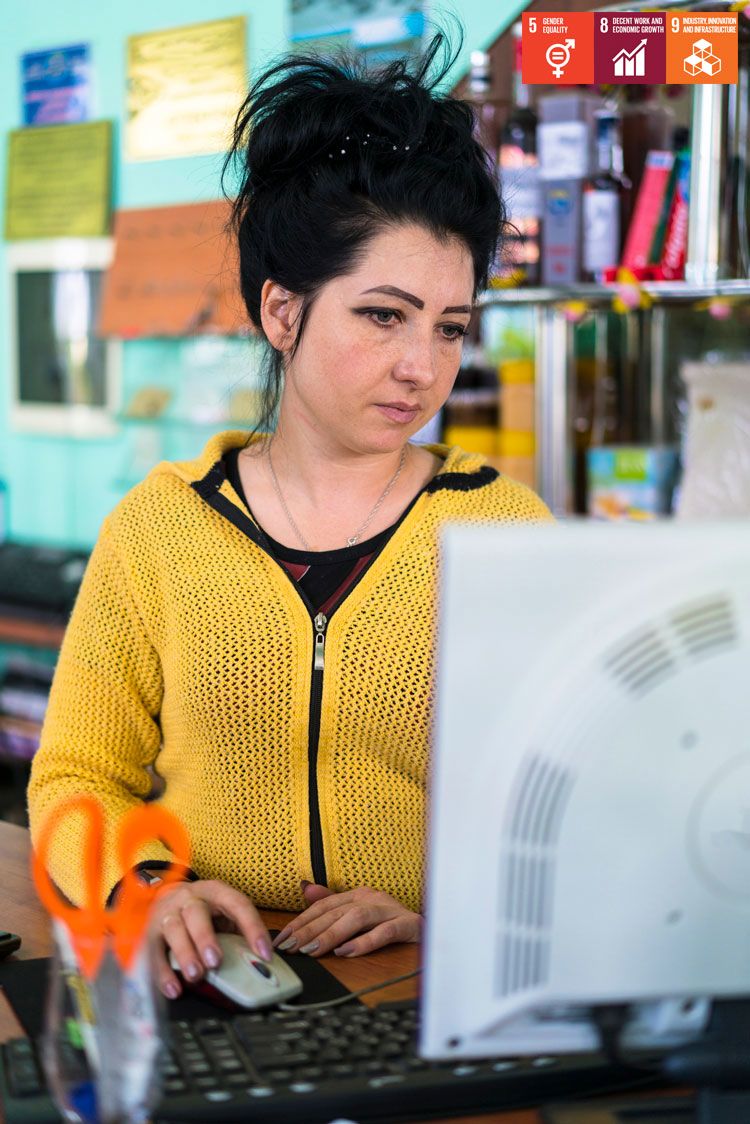
WIPO is helping universities and research institutions in the Kyrgyz Republic use IP as a means to increase knowledge transfer from academic research to the private sector for the benefit of all society. The project, carried out in collaboration with Kyrgyzpatent, includes training for women inventors and follows the WIPO IP Toolkit for Universities. (Photo: iStock/Getty Images Plus/DavorLovincic)
WIPO is helping universities and research institutions in the Krygyz Republic to use IP as a means to increase knowledge transfer from academic research to the private sector. (Photo: iStock/Getty Images Plus/DavorLovincic)
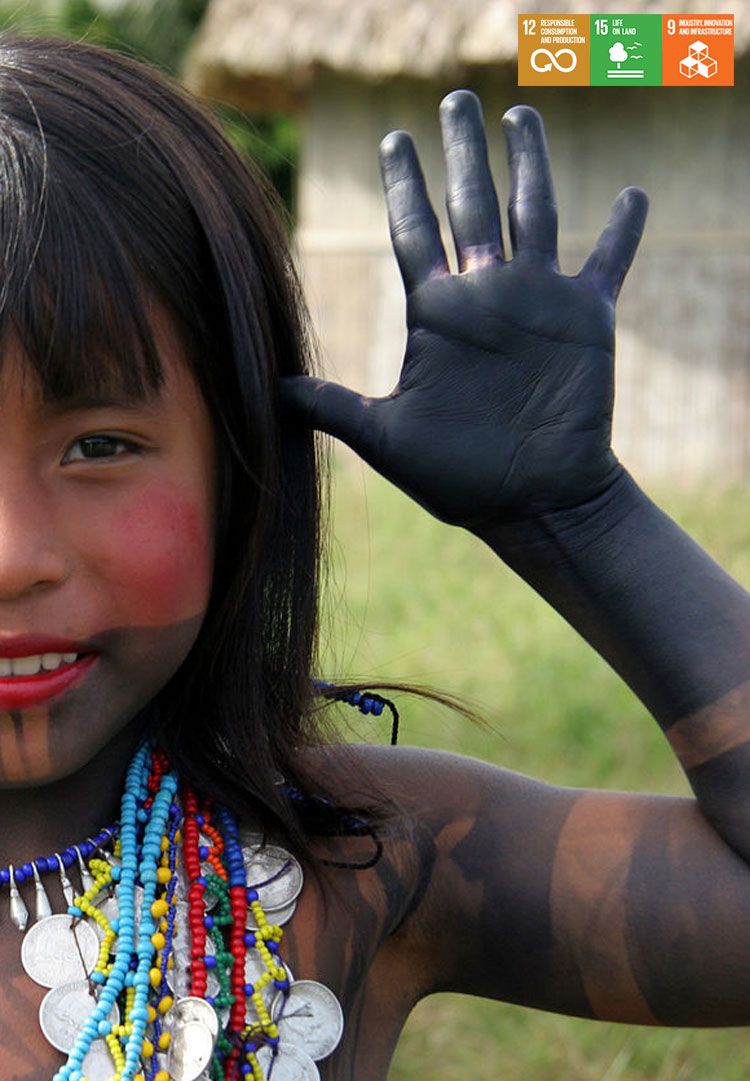
Indigenous and local communities can benefit from patents if they decide to participate in the commercialization of products based on genetic resources and their associated traditional knowledge. According to the lawyers who worked on this project, this is precisely the case of the Embera indigenous community, which together with Ecoflora will benefit from a patent obtained for a blue colored powder. Read the full story. (Photo: Yves Picq CC BY-SA 3.0)
Indigenous and local communities can benefit from patents if they decide to participate in the commercialization of products. Read the full story. (Photo: Yves Picq CC BY-SA 3.0)

Rethinking recycling in South Africa
As the need to build sustainable communities becomes increasingly urgent, it is more important than ever that recycling is efficient and accessible. This is especially true in South Africa, where as much as 90% of post-consumer packaging and paper that gets recycled is thanks to informally-employed waste pickers. However, many waste pickers are required to walk long distances to out-of-town recycling centers in order to deposit their finds and get paid. As a result, many people are put off from taking up this vital work.
This problem caught the attention of friends Boitumelo Tlhapi and Edward Mfatshe. Determined to make recycling easier, they invented a mobile container with an in-built electronic payment system, meaning that waste pickers can be paid without having to haul their finds to distant recycling centers at the end of a long day’s work. This invention became the basis of their company, Waste Buddies.
In order to strengthen their fledgling business and have a greater say in its future development, Tlhapi and Mfatshe were encouraged by South Africa’s Companies and Intellectual Property Commission to apply to WIPO’s Inventor Assistance Program (IAP). Officially launched in 2016, this public–private partnership helps inventors in developing countries navigate the patent system by pairing them with legal experts who volunteer their services free of charge.
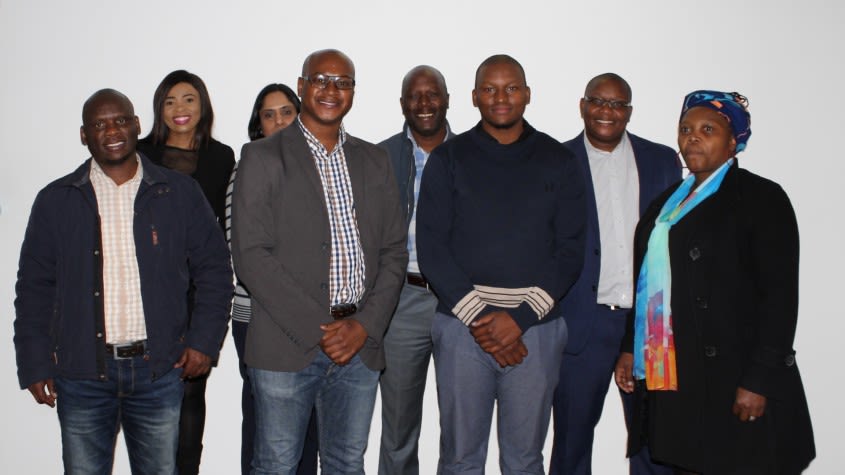
Waste Buddies inventors Boitumelo Tlhapi and Thato Mfatshe with staff from the Companies and Intellectual Property Commission (CIPC). (Photo: CIPC)
Waste Buddies inventors Boitumelo Tlhapi and Thato Mfatshe with staff from the Companies and Intellectual Property Commission (CIPC). (Photo: CIPC)
Thanks to the expertise and encouragement provided by the IAP, Tlhapi and Mfatshe are now working to develop Waste Buddies into a successful business that makes sustainable living easier for fellow South Africans. Waste Buddies is the 50th invention to receive support from the IAP, which has also helped socially-minded inventors in Colombia, Ecuador, Morocco and the Philippines to ensure that great ideas do not go to waste.
(Photo: UNIDO)
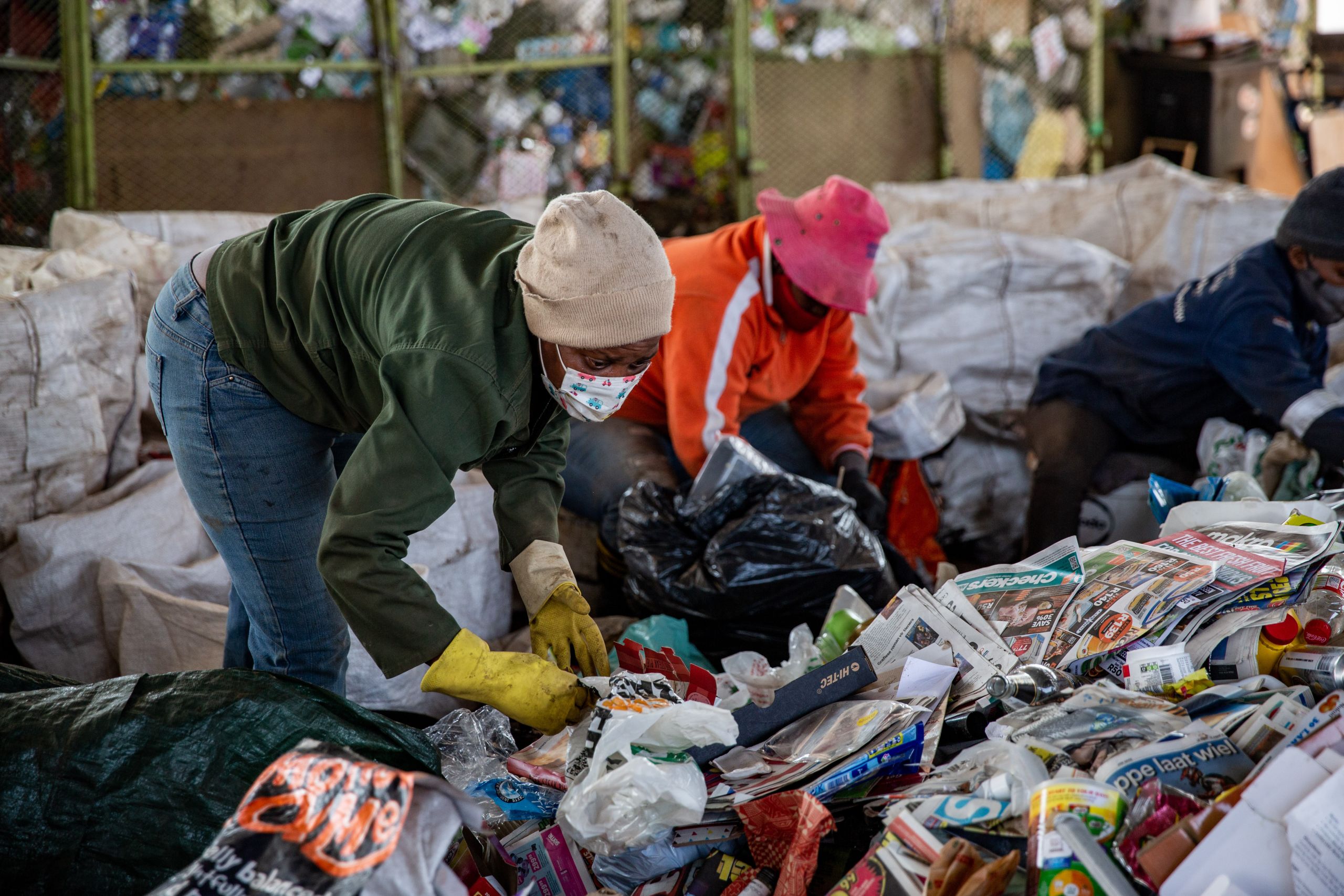
Patent information and innovation
Patent owners have the exclusive right to control how an invention is made or used for a limited time within a specific territory. In return for this exclusive right, they must provide a detailed explanation of what their invention does and how it works. Patent offices publish this information in documents that are available to the public.
Patent documents contain detailed technical information in a standardized format. They cover both past and state-of-the-art inventions in all technological fields.
These patent documents equate to a wealth of technological and business intelligence, and support the international flow of knowledge and technical expertise. WIPO offers a range of services and programs that increase access to this knowledge.
WIPO’s PATENTSCOPE database supports innovation by providing free access to over 70 million patent documents. These documents represent one of the world's largest collections of human knowledge and include information in technical fields such as artificial intelligence, for which the PATENTSCOPE AI Index was created in April 2019.
Mastering patent information
Many researchers and inventors in developing countries are not aware of the importance or sometimes even the existence of patent information. Those that are aware do not always know how to use it effectively. WIPO offers extensive training in this area.
Since April 2009 WIPO has worked with national innovation promotion authorities, universities, public research institutes, and science parks to establish Technology and Innovation Support Centers (TISCs) in more than 80 countries, providing local innovators with easy access to technological information, scientific and technical literature, and patent databases.
WIPO administers the Access to Specialized Patent Information (ASPI) public-private partnership in cooperation with leading patent information providers. It provides free or low-cost access to sophisticated tools and services for retrieving and analyzing patent data. WIPO’s Access to Research for Development and Innovation (ARDI) partnership improves developing-country access to scholarly literature from diverse fields of science and technology.
Analyzing patent information
Patent documents are also a key tool for analyzing trends in the diffusion of technologies. WIPO contributes to a deeper understanding of the information contained in patents through analytical reports.
In 2024 WIPO launched an analytical report looking at patents that have been mapped to the SDGs. “Mapping Innovations: Patents and the SDGs” provides crucial insights into the impact of IP in advancing global sustainability efforts. The report provides a positive message, revealing that the proportion of patents related to the SDGs are not just growing, but outpacing the general growth seen in worldwide patenting across all areas of technology.
Video: The WIPO Technology Trends report offers unique insights into tech trends, whilst also facilitating evidence-based discussions and policy making. The 2021 edition focused on assistive technologies.
Appropriate technologies
Patent protection only lasts for a limited period. Once that period has expired, the invention is “off-patent” and anyone is free to make and use it. Furthermore, each patent is only effective within the territory of the country or region that granted it. Since it costs money to obtain patents, inventors often seek patent protection only in certain target markets, leaving it open to others to exploit the invention outside those markets.
The technical and scientific information contained in patent documents can be used freely in countries where the invention is not protected. This can lead to the development of technologies that are appropriate to local needs and conditions in developing countries, based on the latest technical expertise from inventors worldwide.
WIPO is building a center of excellence on the use of appropriate technologies to improve access to the technical and scientific information available in patent documents and build the skills needed to use this information effectively. Through this center, resource-poor communities, particularly in LDCs, will gain access to technologies that can be adapted to solve their local problems and contribute to sustainable economic and social development.
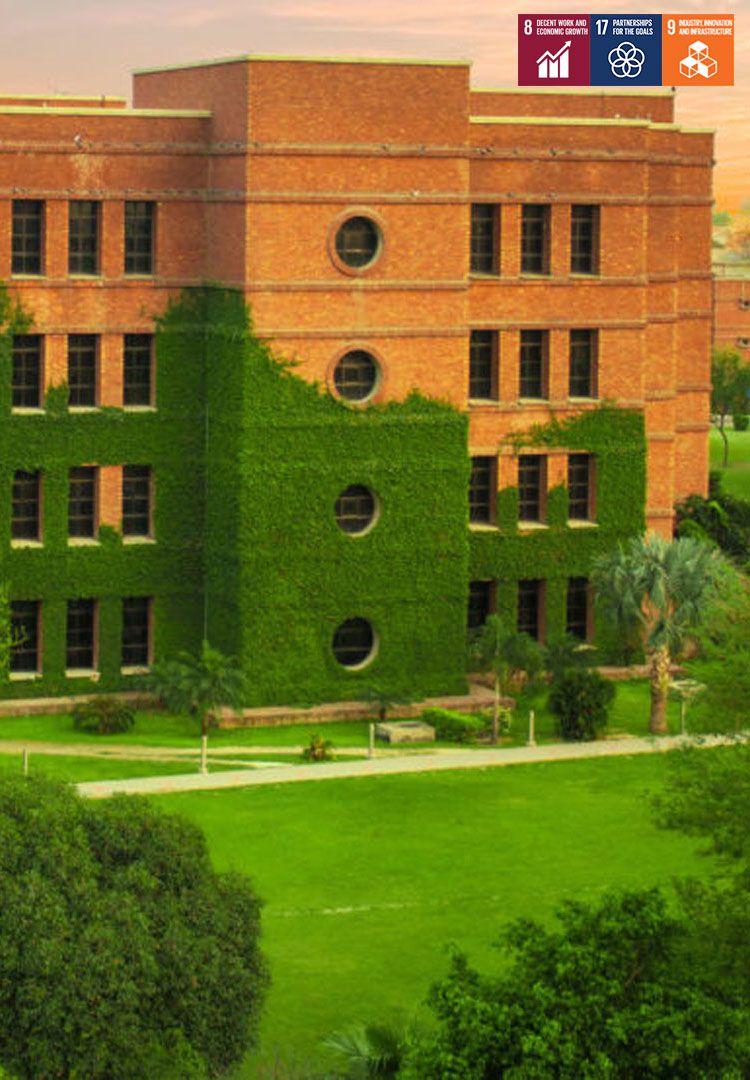
There are 27 TISCs in Pakistan, most of them hosted by academic institutions like the Lahore University of Management Sciences (LUMS). Of the 311 patents filed nationally in 2018, 76 were filed by TISC host institutions. In 2018, TISC staff in Pakistan conducted 55 IP awareness sessions and responded to a record 370 queries in a single month. (Photo: LUMS)
There are 27 TISCs in Pakistan, most of them hosted by academic institutions like the Lahore University of Management Sciences (LUMS). (Photo: LUMS)

The WIPO Appropriate Technologies project was designed to improve the capacity of people, communities and organizations in LDCs to adapt and reapply existing technical and scientific information to address their most urgent development challenges. In Zambia, patent information has enabled rainwater harvesting. Read the full story. (Photo: Getty/PeopleImages)
In Zambia patent information enabled rainwater harvesting. Read the full story. (Photo: Getty/PeopleImages)

Conjuring freshwater from fog
For the Berber communities of Mount Boutmezguida, in the Anti-Atlas mountains of southwest Morocco, finding clean water is a familiar struggle. Declining rainfall and dwindling groundwater reserves mean that women and girls can spend up to five hours every day searching for freshwater. The irony is that the mountain is surrounded by water, in the form of the thick fog which rolls off the nearby Atlantic Ocean.
Peter Trautwein, an industrial designer, realized that this fog could be the solution to the region’s growing water scarcity. Collaborating with the German Water Foundation, he built CloudFisher®, a simple and effective invention that turns fog into drinking water. Consisting of a large mesh net suspended in an upright steel frame, CloudFisher® causes fog to condense in the mesh and collect at the structure’s base, from where it is piped directly into nearby homes.
Thirty-one CloudFisher® fog catchers now adorn the slopes of Mount Boutmezguida, providing clean, affordable and sustainable water to 1,600 people. The new water supply has made it easier for people to grow crops, rear livestock and earn a living from the land, and means girls no longer have to miss school in the search for water.
The technology underpinning CloudFisher® is supported by patents and utility models. This not only protects Trautwein’s invention from being copied, but allows him to expand operations without infringing the intellectual property rights of others – an important consideration when similar mesh technology is also used for commercial purposes. Secure in his intellectual property rights, Trautwein has now introduced CloudFisher® to the highlands of Tanzania and Bolivia, allowing more communities to transform fog into freshwater. When it comes to sustainable water management, sometimes solutions really do fall from the sky.
Video: How the CloudFisher works
(Photo: Courtesy of Aqualonis)

Technology partnerships and innovation
The patent system provides the legal basis for partnerships and collaborations among stakeholders in the innovation ecosystem.
Matching needs with providers
An important step in leveraging IP cooperation for development is to understand the specific development needs of each member state so that these can be matched with potential donors and partners.
The WIPO Match platform matches seekers of specific IP-related development needs with potential providers offering resources. Through its various partnerships, the platform facilitates meaningful and sustained capacity building and technical assistance for developing countries on technology development.
Climate change
Addressing climate change and progressing towards sustainable development is dependent on economic growth that works with, rather than against, the environment. Innovative green technology solutions can help by allowing us to do more with less – be it alternative, more efficient energy production and use; new forms of green transportation; or more sustainable, environmentally friendly forms of agriculture and forestry.
WIPO GREEN is an online marketplace for sustainable technologies. It promotes the innovation and diffusion of green solutions by connecting technology and service providers with those seeking environmentally-friendly, innovative solutions.
Health
Neglected tropical diseases, malaria and tuberculosis affect more than one billion people across the globe. Although recent years have seen the arrival of new R&D models and extra resources, there remains a pressing need to bridge research gaps and to bring together knowledge, skills and infrastructure from the private, non-profit, and academic sectors. The IP system can mobilize innovation to improve global health by fostering collaborations between the private and public sectors.
WIPO Re:Search catalyzes the discovery and development of medical products for patients affected by neglected tropical diseases, malaria, and tuberculosis. It does this through innovative research partnerships and knowledge sharing among leading pharmaceutical companies and participating private- and public-sector research institutions.
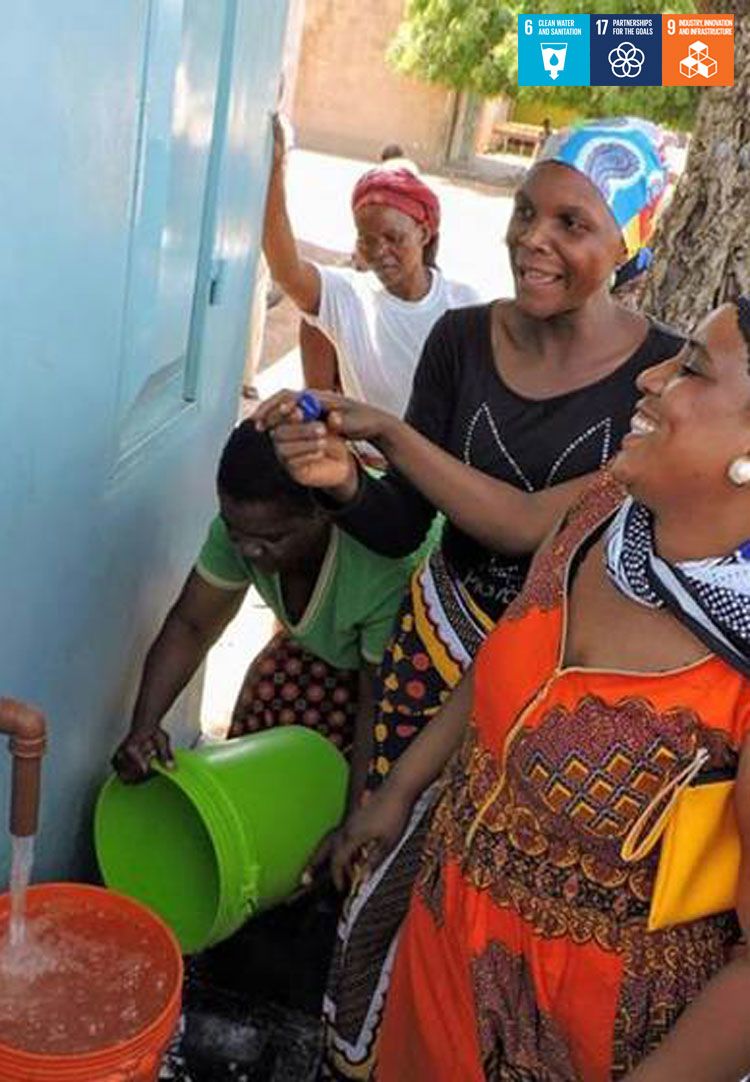
Since connecting at an international matchmaking event co-organized by WIPO GREEN, CUBO Environmental Technologies and Susteq have joined forces to maximize the impact of their green technology innovations. The two companies are currently working together to bring safe, affordable drinking water to over 20,000 people in Nigeria and Kenya – and plan to expand to Senegal and India. Read the full story. (Photo: Susteq)
CUBO Environmental Technologies and Susteq are working together to bring safe drinking water to over 20,000 people in Nigeria and Kenya. Read the full story. (Photo: Susteq)
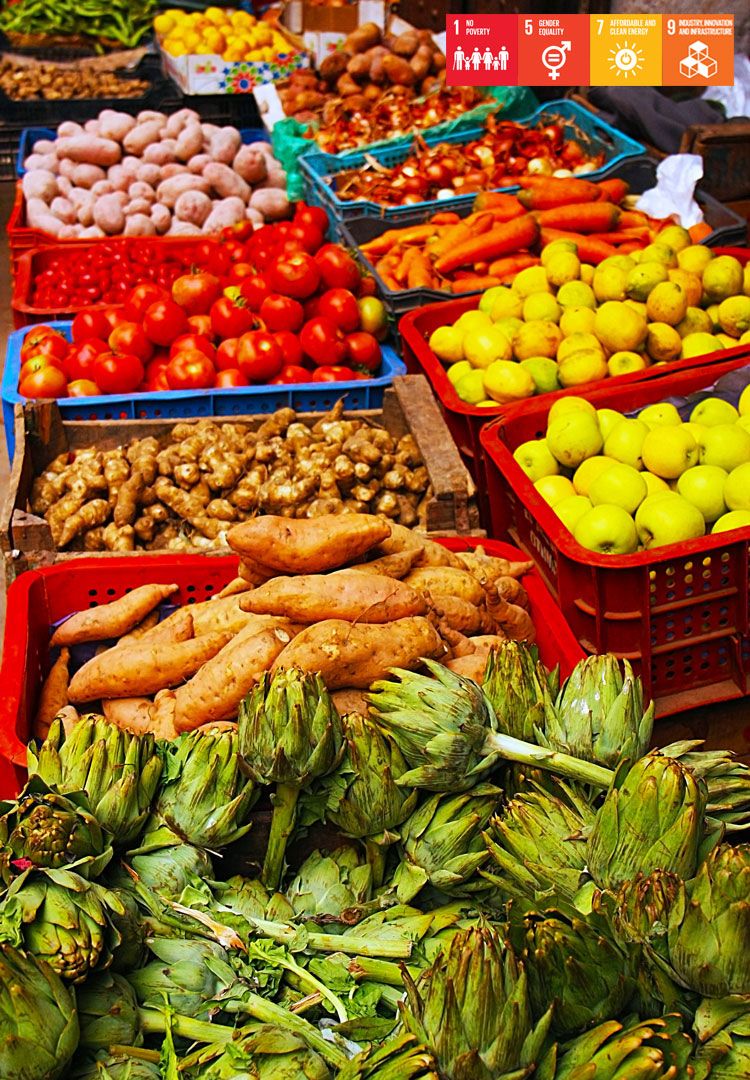
Kijani Energy developed mobile, solar-powered cooling units for small farmers to store and transport their crops, enabling them to sell fresher produce for longer. The units, assembled exclusively by women, are used in markets throughout Mozambique. The company is using WIPO Match to find partners to help strengthen its IP portfolio and expand to other markets. (Photo: Getty/Cristian Pacurar)
Kijani Energy developed mobile, solar-powered cooling units which are used in markets throughout Mozambique. (Photo: Getty/Cristian Pacurar)

Unlocking the secrets of traditional medicine
The diverse communities of Papua New Guinea have long used the country’s rich natural heritage for their medical needs. For scientists looking to discover and develop new drugs, these traditional medicinal plants may hold vital insights. This is especially true for neglected tropical diseases, which remain prevalent in countries such as Papua New Guinea due to insufficient investment in their diagnosis and treatment.
Dr. Martha Yahimbu, a senior lecturer in pharmacy at the University of Papua New Guinea, has dedicated her career to unlocking the medicinal secrets of her country’s unique flora. In 2019, her work led her to WIPO Re:Search, a public–private partnership that orchestrates fellowships for scientists in developing countries to partner with leading pharmaceutical labs.
Dr. Yahimbu’s fellowship – one of more than 150 arranged through WIPO Re:Search – saw her teaming up with the University of California’s world-renowned Center for Discovery and Innovation in Parasitic Diseases. Here she learned a range of skills, from mass spectrometry to project management, and joined an international network of like-minded researchers.
Now back in Papua New Guinea, Dr. Yahimbu is wasting no time putting these experiences to good use. When not busy leading local and international drug discovery projects, she is supervising the renovation and restaffing of her university’s natural products and biomedicines lab. Most importantly for Dr. Yahimbu, she is teaching young researchers the science of drug discovery, and soon hopes to send her students into the field in the search for new and potentially life-saving treatments for neglected tropical diseases. ‘It is very inspiring to see a new generation of scientists acquiring so early in their training the skills that I gained in the second half of my career,’ said Dr. Yahimbu.
(Photo: Courtesy of Dr. Martha Yahimbu)
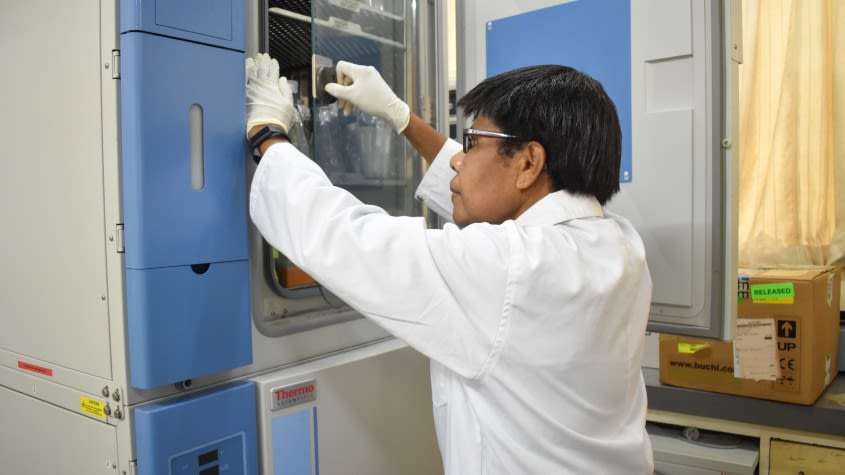
Branding and competitiveness
Small and large companies in all economic sectors throughout the world rely on brands to commercialize their goods and services. Brand appeal can be as important for determining competitive success as quality or price – it is among the most valuable intangible assets companies can own.
Companies investing heavily in branding tend to be highly innovative. In this way, branding can be an important complement to product innovation. By generating demand and a willingness to pay, branding enables firms to profit from investing in technology and design.
Trademarks
Trademarks – the legal incarnation of brands – are by far the most widely used form of registered intellectual property (IP) rights. Trademark protection is essential for preserving and capitalizing on the most identifiable feature of brand equity and value.
WIPO invests significant time and resources in developing and maintaining practical services that enable users of the international trademark system to protect their brands in global markets, so that their businesses can develop and drive national economic growth.
WIPO’s Madrid System offers a convenient and cost-effective way for businesses to protect their brands in multiple markets. Brand owners benefit from its simplified and centralized procedure for international trademark protection, expansion, and management. In addition, brand owners from least developed countries (LDCs) benefit from a 90% reduction on the basic fee for filing an international trademark application.
Technical assistance
WIPO works to assist brand owners from all nations, particularly developing nations and least developed countries, to use the Madrid System to add value to their products for business competitiveness. Trademark-related technical assistance includes training for IP office staff, legislative advice, and free online seminars and tools for brand owners.

The WIPO Study on IP, Tourism and Culture explored the potential to exploit IP assets for the promotion of tourism and cultural heritage in Egypt. Read the study summary. (Photo: iStock/Getty Images Plus/ Mekhamer)
The WIPO Study on IP, Tourism and Culture explored the potential to exploit IP assets for the promotion of tourism and cultural heritage in Egypt. Read the study summary. (Photo: iStock/Getty Images Plus/ Mekhamer)
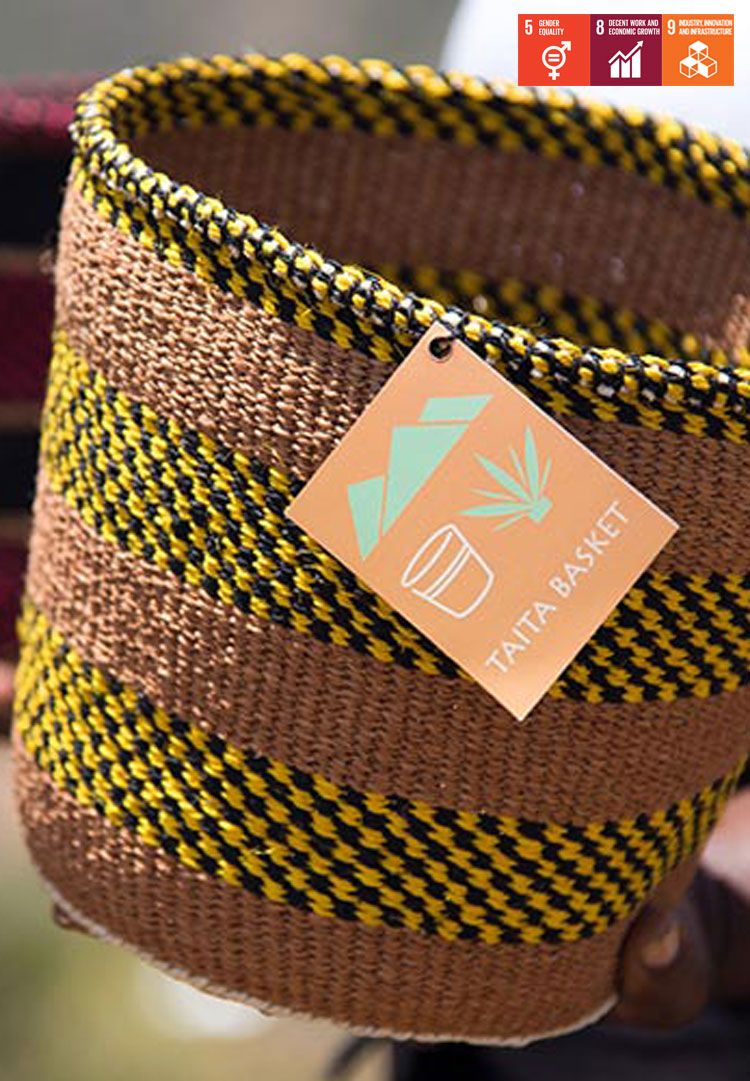
WIPO, in cooperation with a range of partners and funding from Japan Funds-in-Trust, helped a community of basket weavers in Kenya come together to brand their products and develop their livelihoods. Read the full story. (Photo: WIPO/Tsuda)
WIPO, with several partners and funding from Japan Funds-in-Trust, helped a community of Kenyan basket weavers in Kenya come together to brand their products and develop their livelihoods. Read the full story. (Photo: WIPO/Tsuda)

Kenyan sportswear brand makes strides
With 30 Olympic gold medals in athletics to its name, Kenya’s running heritage is world-renowned. However, despite the country’s sporting success – and a large domestic demand for quality sportswear – it wasn’t until 2016 that Kenya had its own running shoe manufacturer.
That company, Enda, was founded by Kenyan entrepreneur Navalayo Osembo-Ombati. Her mission is not only to build a global sports brand, but to create a company that benefits local Kenyan communities and the wider world. Enda assembles its shoes in Kenya, where it creates jobs and supports a range of community projects. It is also a certified Climate Neutral company and a certified B Corporation.
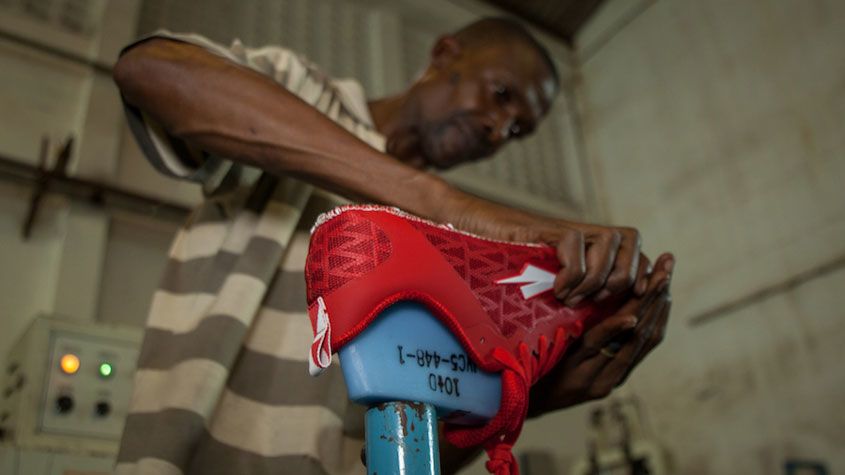
Enda’s aim is to build up its manufacturing capability in Kenya and for its shoes to be 100 percent Kenyan-made. (Photo: Courtesy of Enda)
Enda’s aim is to build up its manufacturing capability in Kenya and for its shoes to be 100 percent Kenyan-made. (Photo: Courtesy of Enda)
Getting up and running in the highly competitive world of sportswear is not without its challenges. For Osembo-Ombati, the secret to success lies in protecting her company’s IP. ‘A common misconception is that IP is a preserve of big businesses,’ she explains, ‘but I am here to say that it is not.’ Even for a small company like Enda, ‘we had to think about IP from the beginning. Without IP rights, we would have no legal means of defending ourselves against copycats or other unscrupulous operators.’
Since releasing its first shoe in 2017, Enda has become a runaway success, with a team of more than forty staff and an award-winning range of products. And as Osembo-Ombati sets her sights on the future, intellectual property will remain at the heart of the company. ‘You have to factor in IP as something that’s critical to your success,’ she insists. ‘IP is king.’
Video: Enda, the Kenyan company that runs on IP
Video: Enda, the Kenyan company that runs on IP
(Photo: Courtesy of Enda)
(Photo: Courtesy of Enda)

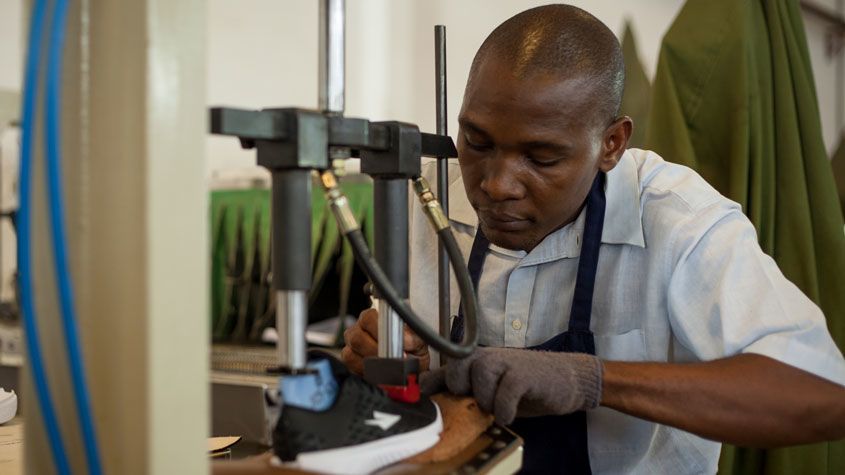
Design and competitiveness
An industrial design right is an intellectual property (IP) right that protects the aesthetic aspect of an article. In comparison with other IP rights, industrial designs are relatively simple and inexpensive to develop and to protect – even for individual designers – in both industrialized and developing countries.
Designs and other IP
Industrial designs often complement other forms of IP rights to support the commercialization of new products incorporating technological innovations. Design appeal can play an important role for firms in creating a differentiated consumer experience and thereby gaining an edge on competitors.
WIPO economic studies in Southeast Asian countries have shown that the industrial design system plays a supporting role in stimulating the innovation that firms in middle-income countries engage in. In contrast to patents, firms do not have to be at the cutting edge of technology to be successful at creating new designs. Designs mainly require human talent, of which there is often ample supply even in more resource-constrained environments. There is also some evidence that design innovation may be a way of breaking into foreign markets and increasing exports.
Technical assistance
An effective system for the protection of industrial designs helps designers and companies to ensure a fair return on their investment and injects creativity into the industrial and manufacturing sector of a country.
WIPO works to assist all nations, particularly developing countries and LDCs, to use the industrial design system to add value to products for business competitiveness. WIPO’s industrial design-related technical assistance includes training for IP office staff, legislative advice, and free online seminars and tools for design owners.
Design protection services
WIPO invests time and resources in developing practical services that enable users of the industrial designs system to protect their designs in global markets, so that their businesses can develop and drive national economic growth.
WIPO’s Hague System makes it easier for businesses and individual designers to protect their designs in multiple countries. Design owners benefit from its simple and cost-effective procedure for international industrial design protection. In addition, design owners from LDCs benefit from a 90% reduction on certain fees.

WIPO and Tongji University in China offer a Joint Master’s Degree program in Intellectual Property Law with a Specialization in Design. Find out more. (Photo: iStock/Getty Images Plus/Chalffy)
WIPO and Tongji University, China, offer a Joint Master’s Degree program in IP Law with a Specialization in Design. Find out more. (Photo: iStock/Getty Images Plus/Chalffy)
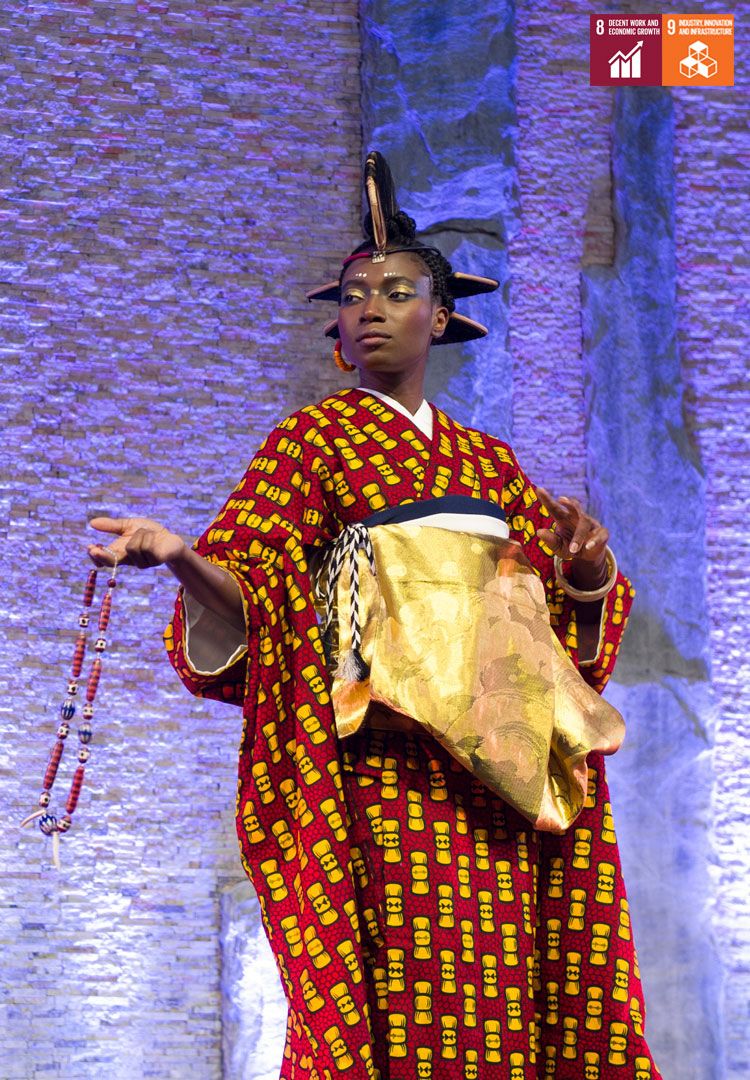
The work of Cameroonian-born designer Serge Mouangue fuses the elegance and sophistication of Japanese cultural icons with the vibrant colors and flamboyance of West Africa. He sees IP as an incentive to create and a means to make a living from his creativity. Read the full story. (Photo: WIPO/Martin)
The work of Cameroonian-born designer Serge Mouangue fuses the elegance and sophistication of Japanese cultural icons with the vibrant colors and flamboyance of West Africa. Read the full story.(Photo: WIPO/Martin)

Bringing Arabian heritage to the luxury market
For centuries, the mystique of the Arabian Desert has allured travelers from around the world. Now, a Bahrain-based company is bringing that allure to the luxury market. Founded in 2002 by Mohamed Al Asfoor, Designer Shaik Inc. designs and creates high-quality products – from pens to perfume – inspired by the romanticism and style of Al Asfoor’s Arabian heritage.
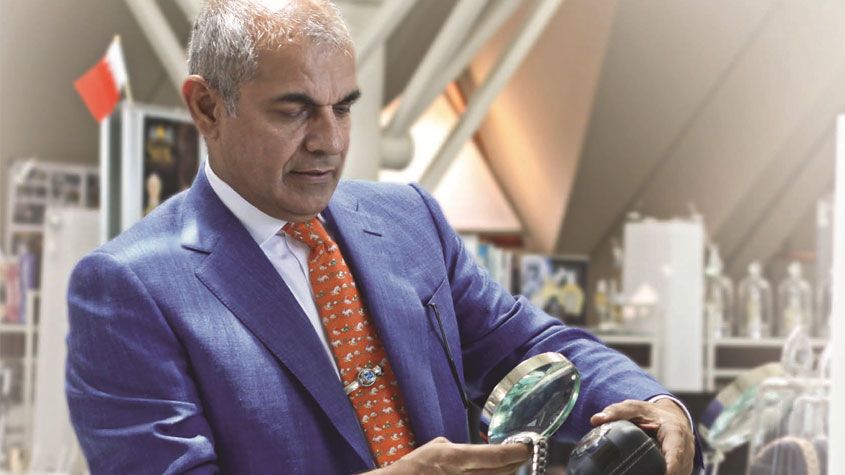
Founded in 2002 by Mohamed Al Asfoor, the Designer Shaik brand captures a sense of style and taste that is rooted in Arabian heritage and the mystique of the desert sands. (Photo: © Courtesy of Designer Shaik)
Founded in 2002 by Mohamed Al Asfoor, the Designer Shaik brand captures a sense of style and taste that is rooted in Arabian heritage and the mystique of the desert sands. (Photo: © Courtesy of Designer Shaik)
The past two decades have seen Designer Shaik expand out of Bahrain and make a name for itself in the international market. However, with increasing recognition of the company’s unique style came repeated attempts to impersonate its products and infringe its designs.
These attempts led Al Asfoor to begin protecting his company’s IP. ‘It is vital for SMEs to understand that they need IP protection at an early stage of their journey to market,’ he explains. ‘Ideas require time to develop, and protecting those ideas early can pay off in the long term.’ Designer Shaik now has trademarks for its name and logo and industrial design rights for its distinctive perfume bottles. The company’s watches are especially well protected, with a patent for the watch strap and industrial design rights for the watch’s shape and hands.

Designer Shaik has acquired IP in the form of trademarks for its name and logo, industrial designs rights for its watch hands, watch shape and perfume bottle and a patent for its watchstrap. (Photo: © Courtesy of Designer Shaik)
Designer Shaik has acquired IP in the form of trademarks for its name and logo, industrial designs rights for its watch hands, watch shape and perfume bottle and a patent for its watchstrap. (Photo: © Courtesy of Designer Shaik)
Armed with robust intellectual property rights, Designer Shaik is now looking to expand its product range and increase brand awareness around the world. ‘For SMEs, securing IP is as important as the creation of a product itself,’ says Al Asfoor. ‘One cannot do without the other.’
(Photo: © Courtesy of Designer Shaik)

Origin-based products and competitiveness
Appellations of Origin (AOs) and geographical indications (GIs) are used to identify products that have a specific geographical origin and possess qualities, characteristics and/or a reputation that are due to that origin. They can serve as powerful marketing tools to add commercial value to the products that they identify.
This is increasingly true in a global market where consumers seek every greater assurances about the quality, authenticity and traceability of products. AOs and GIs have been developed and implemented, as IP rights, to bring this information to consumers.
Collective rights
In addition, AOs and GIs are collective rights that can be used by all those producers that meet recognized and mutually agreed standards of production for a specific origin-based product. An effective system for the protection of AOs and GIs helps producers obtain a fair return on their continuous investment and effort, often over several generations, in building the reputation of traditional origin-based products.
Because of the collective dimension of these IP rights and the fact that they often give value to traditional and emblematic products of a particular region, the protection of local AOs and GIs has the potential to enhance the reputation of the region in which they originate. Such protection can also contribute to a region’s economic and social development by producing spill-over effects such as the creation of new employment opportunities (e.g. local tourism).
Technical assistance
WIPO works to assist all nations, particularly developing countries and LDCs, to use AOs and GIs to add value to commodities for business competitiveness. WIPO’s AO/GI-related technical assistance includes training for relevant authorities and interested stakeholders, legislative advice, and national/regional events for local communities and producers.
WIPO also provides assistance in establishing GI quality schemes, which add value and help sustain the reputation of those origin-based products. This, in turn, contributes to the creation of new job opportunities, fosters sustainable local development and stabilizes populations in their region of origin.
As women are often involved in the production of these traditional origin-based products, such activities can also have a positive impact in promoting gender equality and women's empowerment.
WIPO’s Lisbon System makes it easier for small-scale farmers, artisans, and businesses to protect their AOs and GIs in foreign markets though a simple and cost-effective procedure. In addition, GI right holders from LDCs will benefit from a 50% reduction on certain fees after the entry into force of the Geneva Act of the Lisbon Agreement.
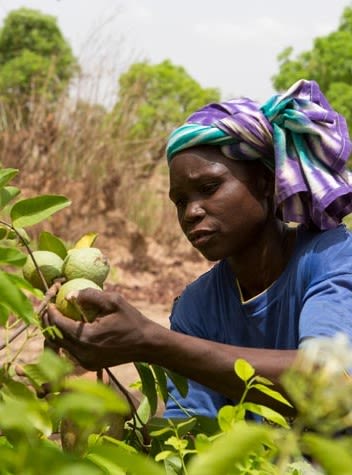
Madd (or Saba senegalensis) is a wild species of fruit; a berry with a hard, yellow peel that can be found predominantly in the woodlands and certain savannahs of Burkina Faso, Senegal, Guinea, Guinea Bissau, Mali, Ghana and Côte d’Ivoire. The plant is a climbing vine with tendrils that allow it to cling to the trunks and branches of trees in the forest, where it grows wild. Its fruits are ovoid and orange when ripe and are full of pulp-coated seeds. They are rich in carbohydrates and vitamin A, K and C. Read the full story. (Photo: Courtesy of ETDS)
Madd (or Saba senegalensis) is a wild species of fruit; a berry with a hard, yellow peel that can be found predominantly in the woodlands and certain savannahs of Burkina Faso, Senegal, Guinea, Guinea Bissau, Mali, Ghana and Côte d’Ivoire. The plant is a climbing vine with tendrils that allow it to cling to the trunks and branches of trees in the forest, where it grows wild. Its fruits are ovoid and orange when ripe and are full of pulp-coated seeds. They are rich in carbohydrates and vitamin A, K and C. Read the full story. (Photo: Courtesy of ETDS)
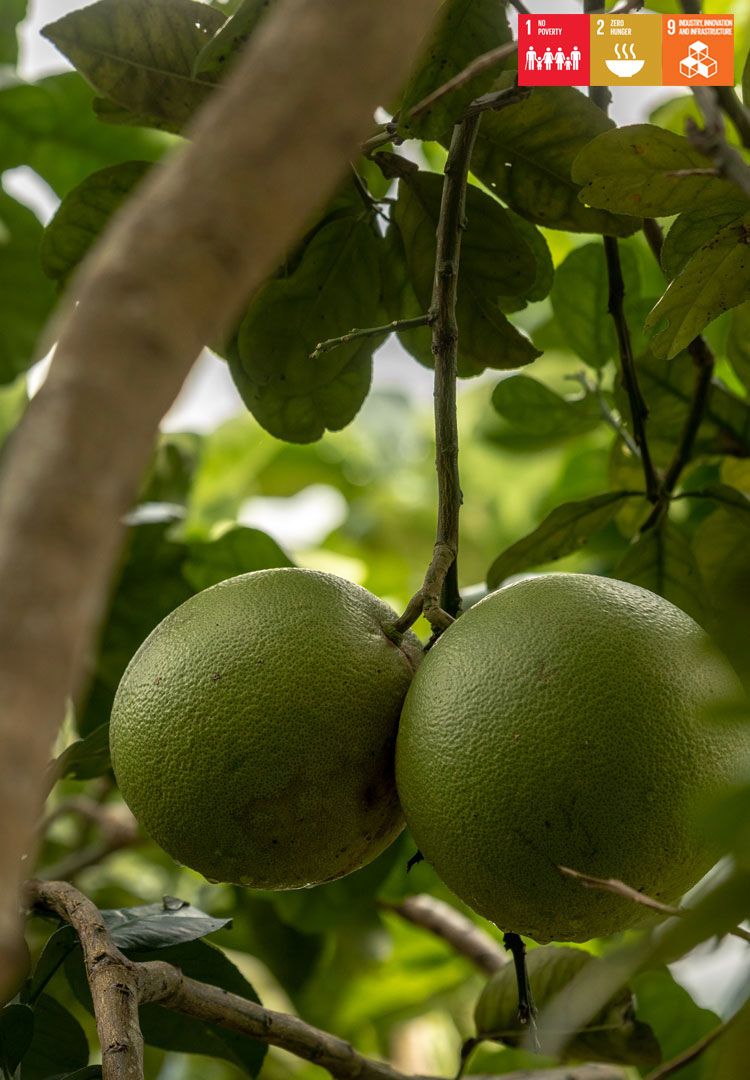
In 2018 WIPO assisted a farmers' association in Cambodia, mostly composed of women, to register a GI for the Koh Trung Pomelo. The collective management of the GI by the association, including implementation of a quality control system and promotional campaigns, have increased the reputation of the GI Koh Trung Pomelo in the country along with revenues for farmers on Koh Trung island. (Photo: iStock/Getty Images Plus/Lillitve)
In 2018 WIPO assisted a farmers' association in Cambodia, mostly composed of women, to register a GI for the Koh Trung Pomelo. (Photo: iStock/Getty Images Plus/Lillitve)

Brazil’s banana boom
Deep in the hills of southern Brazil, families in the Corupá region have been growing bananas for 120 years. The area’s subtropical climate and soil conditions result in an unusually long growing period for the fruit, allowing it to develop a high concentration of natural sugars and a sweet, distinct taste. However, it also leaves the banana with a dark, blotchy peel, which can be off-putting for consumers. To popularize their produce, Corupá farmers knew they would have to get creative.
Rising to the challenge, in 2004 they formed the Corupá Association of Banana Producers (ASBANCO). Association members worked hard to promote the fruit, launching cooking competitions, talking to schools and appearing on local radio. They even achieved a Guinness World Record in 2013 when Bananalama, ASBANCO’s annual gathering for off-road motorbike enthusiasts, held the largest ever parade of off-road motorbikes.

The local community greets hikers on the occasion of the Bananalama. (Photo: ASBANCO /Leonardo de Souza)
The local community greets hikers on the occasion of the Bananalama. (Photo: ASBANCO /Leonardo de Souza)
ASBANCO’s efforts yielded fruit in 2012, when Brazil’s National Service of Support to SMEs selected Corupá bananas as a potential candidate for geographical indication (GI) protection. After a scoping study was carried out by local institutions and universities, a GI application for Corupá bananas was submitted, and in August 2018 an appellation of origin was granted – only the tenth in Brazil.
Today, some 980 families of banana producers in the Corupá region are protected by this appellation. The sale of their unique produce generates USD 13.5 million each year for local families, providing a vital economic service for the area. Encouraged by the success of Corupá’s banana boom, local government is now hoping that more of the region’s producers will sow the seeds of prosperity by applying for GI protection.
Video: Differentiating Brazil’s sweetest bananas with a geographical indication
(Photo: ASBANCO / Leonardo Souza)
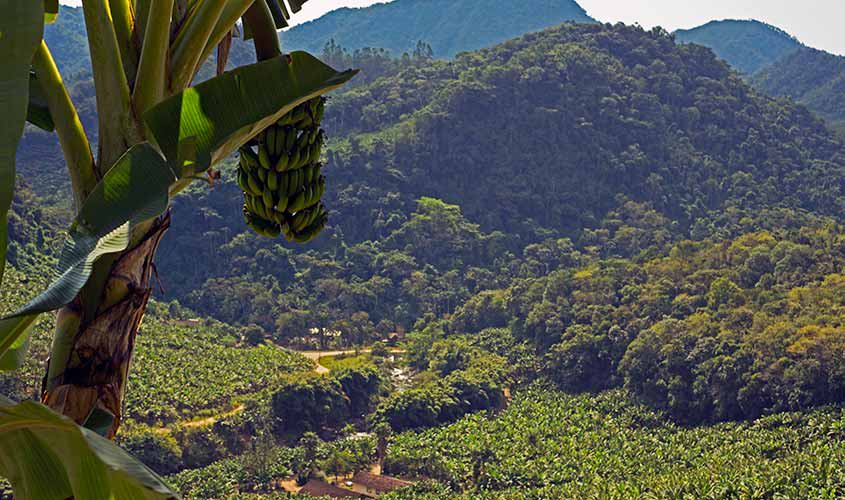
The business of creativity
A wide range of literary, artistic and scientific works are automatically protected upon creation or publication by copyright. Related rights protect the performances, original recordings and broadcasts of works.
Creative enterprises
Creative enterprises and collective management organizations (CMOs) make use of copyright and related rights to protect the creativity, skill and talent of creators producing books, journals, music recordings, works of art, movies, video games, and sometimes fashion designs.
These enterprises are of great importance for the achievement of the SDGs given their contributions to economic performance and development. Since all countries have nationals with creative talent, they can all benefit from the huge potential for wealth and job creation that the creative enterprises represent.
WIPO works with its member states on policy, legal, operational, and educational matters related to copyright and related rights to enable an intellectual property (IP) ecosystem that supports creative industries and the advancement of the SDGs through them.
WIPO’s Publishers Circle initiative fosters new forms of public-private cooperation for the development of a viable, globally connected and effective publishing sector in developing countries.
Cultural entrepreneurship
In an increasingly uniform world, there are significant income-generating opportunities for indigenous and local communities as consumers seek fresh sounds, images and designs that are authentic and distinct. WIPO partners with communities to assist them to make smart and strategic use of IP tools in accordance with their objectives. WIPO's assistance supports sustainable community-led projects that safeguard the richness of traditional cultural expressions, foster creativity and generate tangible economic development.
Video: In 2008, WIPO helped the Maasai to document their own cultural traditions, archive this heritage for future generations, and safeguard their interest in authorizing use of their recordings and traditions by third parties.
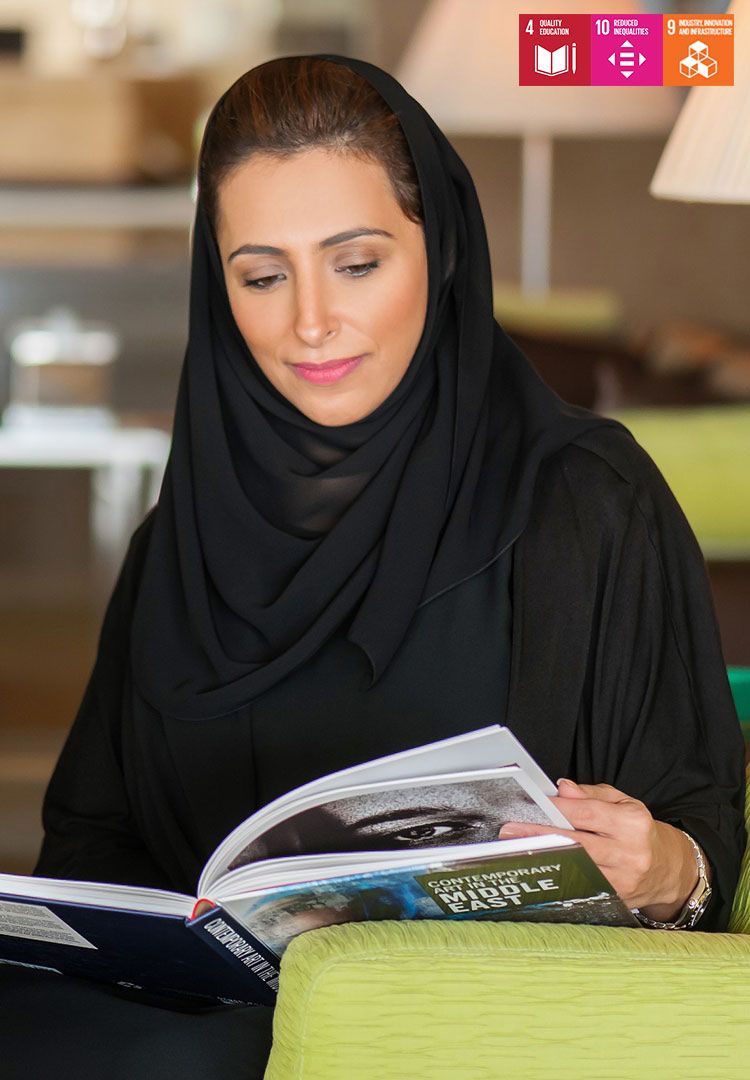
Bodour bint Sultan Al-Qasimi is a driving force in the development of the UAE's publishing industry and in promoting the development of Arabic children’s literature and reading. Find out more. (Photo: Kalimat Publishing)
Bodour bint Sultan Al-Qasimi is a driving force promoting the development of Arabic children’s literature and reading. Find out more. (Photo: Kalimat Publishing)

Making a musical living in Malawi
As new technologies spread and the costs of recording and distribution fall, the music industry is open to more creators than ever. In Malawi, musicians are entrepreneurs, innovators, role models and cultural ambassadors. They have built a creative industry that not only generates employment, but gives Malawian culture a voice that can be heard all over the world.
WIPO has measured the importance of music and other creative industries to Malawi’s development using its Guide on Surveying the Economic Contribution of the Copyright-Based Industries. In 2009 data, copyright-based industries contributed 3.46% of the country’s GDP and 3.98% of income – exceeding sectors like mining, construction and transport. Music employed thousands of musicians, composers, choreographers, promoters and others. And the field has only grown in the years since.
While technology has opened up the industry, however, it has also made it easy for fans to share the songs they love outside of the copyright system. That can keep aspiring Malawian musicians from turning their creations into their livelihoods. The Copyright Society of Malawi, which has led the industry’s modernization since 1992, promotes legal downloading and administers the collective rights of its members. Starting in 2018, the Society has worked with WIPO and pop star Tay Grin to appeal directly to the country’s young people in a school-based project called Respect for Copyright. Outspoken artists like Tay Grin are spreading a message of copyright as a force for creativity, respect and potential in Malawian music.
Video: Malawian hip-hop star Tay Grin talks about the importance of raising awareness about copyright and the battle against piracy.
Video: Malawian hip-hop star Tay Grin talks about the importance of raising awareness about copyright and the battle against piracy.

Access to creativity
Promoting an effective copyright framework that assures an appropriate balance between owners and users of protected works is at the heart of WIPO's mission.
Copyright laws allow for limitations and exceptions to copyright and related rights so that in certain cases protected works may be used without authorization from the owner of the copyright or related right.
Policy work: Marrakesh Treaty
For several years, WIPO’s Standing Committee on Copyright and Related Rights (SCCR), has discussed the issue of limitations and exceptions to copyright and related rights, focusing on educational institutions, libraries and archives, and persons with disabilities. These discussions have been informed by numerous studies and led to adoption of the Marrakesh Treaty.
The Marrakesh Treaty makes the production and international transfer of specially-adapted books for people with blindness or visual impairments easier by establishing a set of limitations and exceptions to copyright.
Public-private partnerships
WIPO complements this legal work with partnerships to implement solutions, platforms and activities that make the legal instruments a practical reality, with tangible benefits for individuals and society as a whole.
The Accessible Books Consortium (ABC) is a public-private partnership led by WIPO that helps increase the number of books worldwide in accessible formats – such as braille, audio, e-text and large print – and makes them available to people who live with blindness, visual impairment, or other print disabilities.
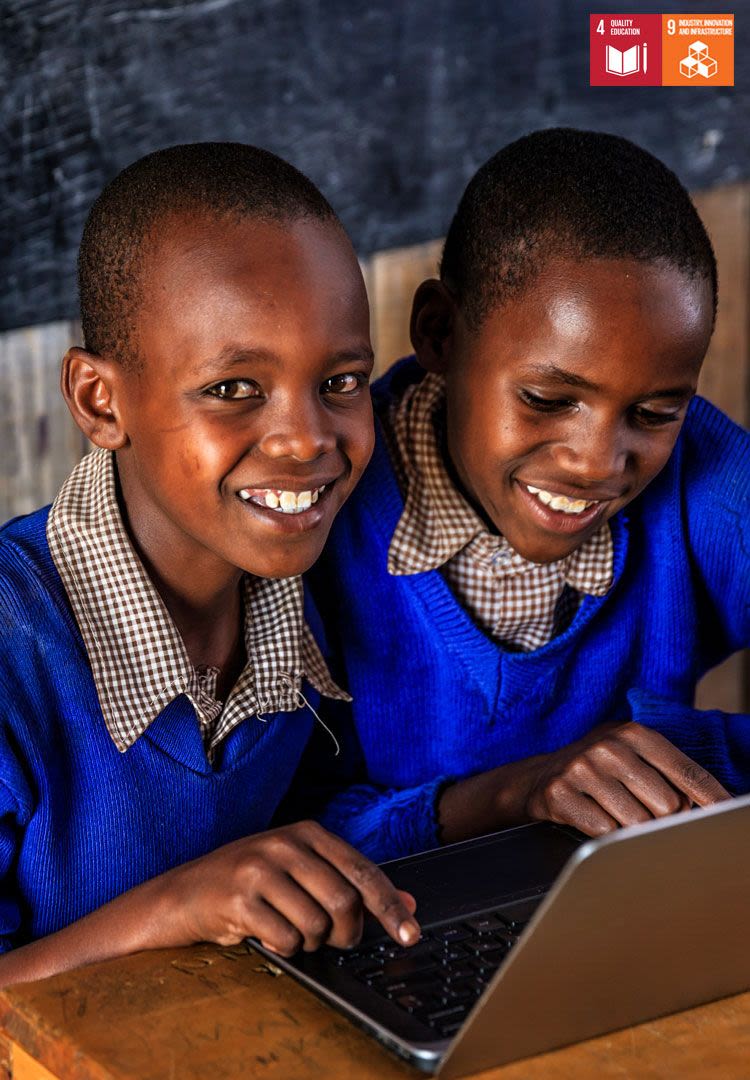
As part of their work in the SCCR, WIPO Member States have agreed on an action plan on copyright limitations and exceptions, including those for educational purposes. (Photo: Getty/hadynyah)
As part of their work in the SCCR, WIPO Member States have agreed on an action plan on copyright limitations and exceptions, including those for educational purposes. (Photo: Getty/hadynyah)
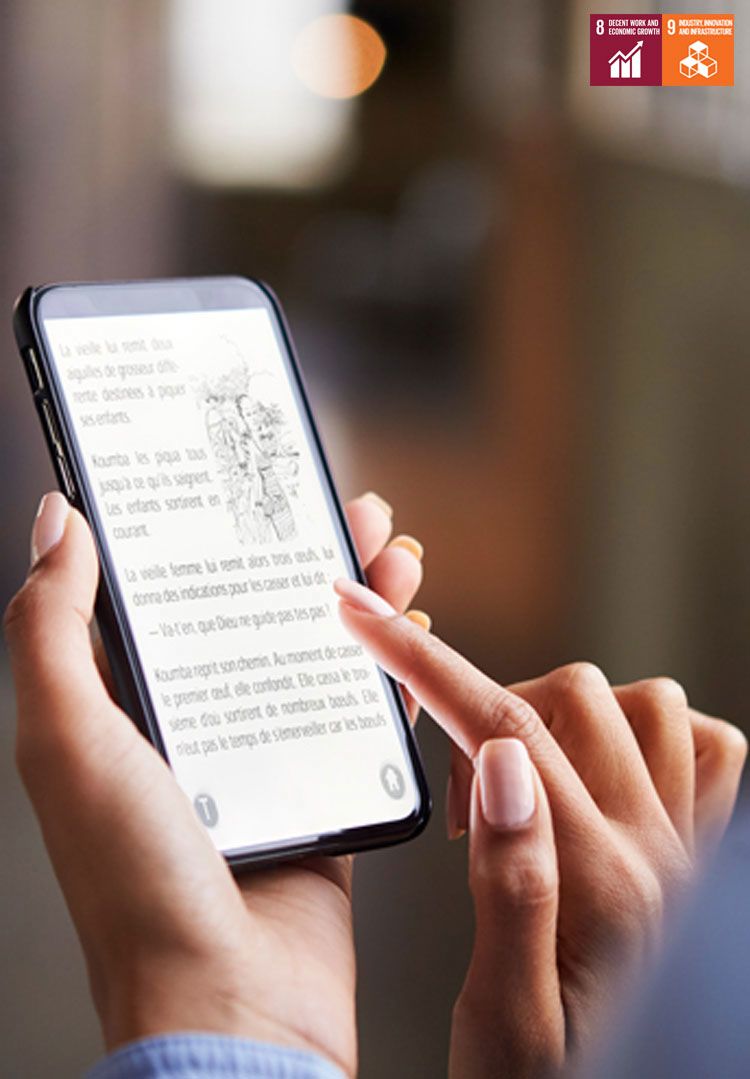
Nouvelles Editions Numériques Africaines (NENA) has a mission to work with various stakeholders in the African book industry to make African literature more accessible via its digital library. NENA is using the WIPO Match platform to find partners that can help it expand beyond Senegal. (Photo: Getty/monkeybusinessimages)
Nouvelles Editions Numériques Africaines has a mission to work with stakeholders in the African book industry to make African literature more accessible via its digital library. (Photo: Getty/monkeybusinessimages)

A textbook answer to educational inequalities
More than 90% of people living with visual impairments live in developing countries. These millions of people have many skills and abilities to contribute to their countries’ development, but on average, have only a one-in-ten chance of going to school or getting a job. One of the biggest obstacles they face is something known as the “book famine”: only a small fraction of all published books, including textbooks, are open to them.
India was the first country to ratify the Marrakesh Treaty in 2014. And Indian public and nonprofit institutions, including the Ministry of Commerce and Industry, the Saksham Trust, the NGO Shubham, and the DAISY Forum of India have been closely involved in the WIPO-led Accessible Books Consortium (ABC).
In the states of Bihar and Madhya Pradesh, ABC partners converted all 180 of the textbooks students need to complete classes 9 through 12 into accessible, text-only digital formats. These can be loaded onto electronic devices that students receive at a subsidized price. In these two states, 5,000 to 7,000 students who would otherwise be unable to read these books can now pore over the same educational materials as their classmates.
The project has generated enthusiasm at a national level, pointing to a future where many more young people will go to school to find a feast of books, not a famine.
Video: Nidhi is a 15-year old student living in northeastern India. Nearly a decade ago, an accident caused the blindness that could have ended her education. With the help of the ABC, Nidhi and thousands of other Indians are benefiting from increased access to texts specially adapted to their needs.
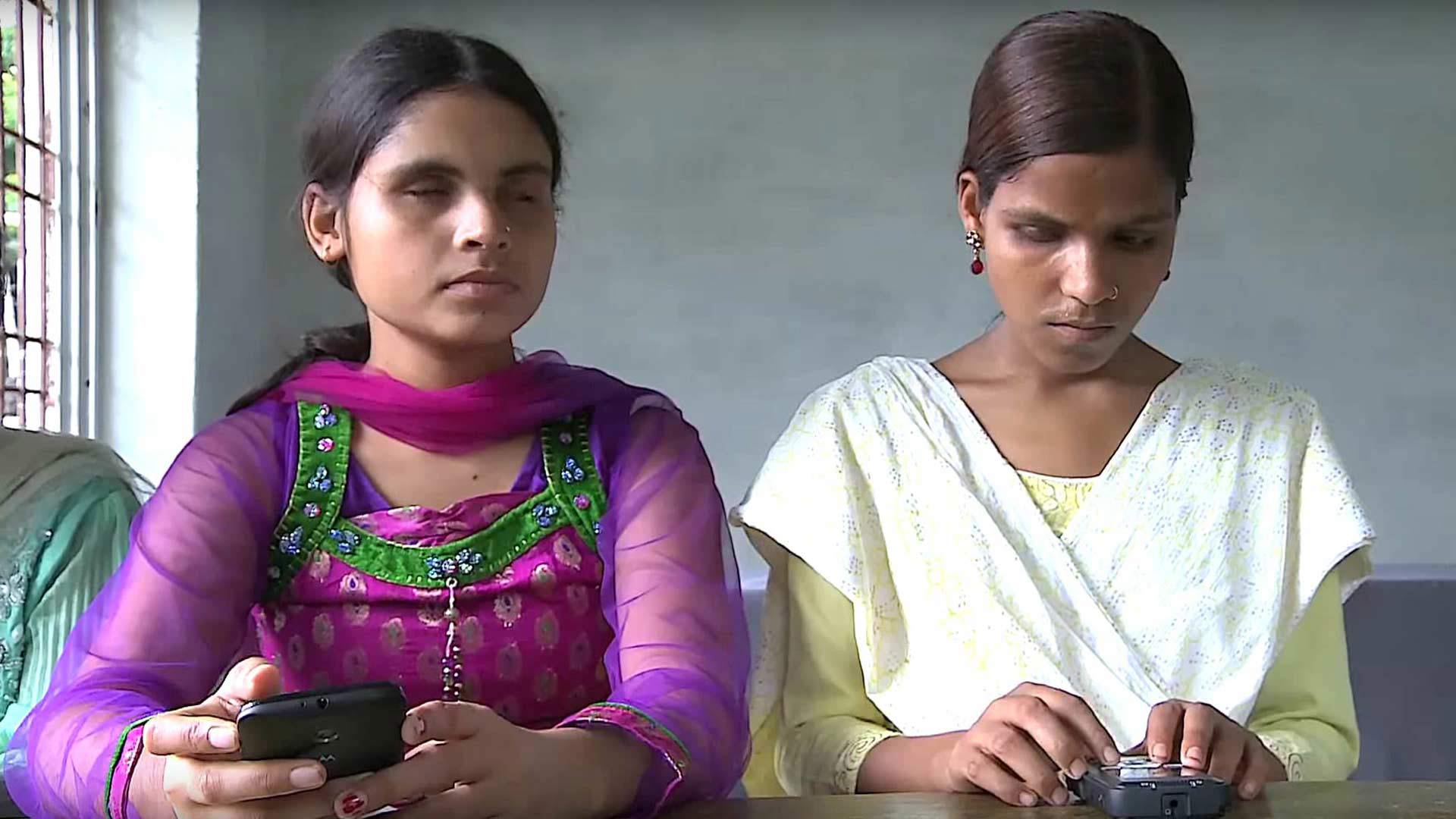
UN partnerships
As a specialized agency of the United Nations (UN), WIPO contributes to inter-agency deliberations on SDG issues within the UN Chief Executives Board, the High-Level Committee on Management and the High-Level Committee on Programmes.
WIPO participates in the key UN processes supporting the follow-up and review of the 2030 Agenda, including through the annual High-Level Political Forum on Sustainable Development.
WIPO is also part of the coordinating mechanisms among UN system and related organizations for implementation of the 2030 Agenda, particularly those relevant to intellectual property (IP) and innovation. The Organization is a longstanding member of the Inter-Agency Task Team on Science, Technology and Innovation for the SDGs, established by member states in 2015, as one of three core components of the Technology Facilitation Mechanism. It is also a member and contributes to meetings of the Inter-Agency Task Force on Financing for Development, and participates as an observer in the Inter-Agency and Expert Group on SDG Indicators.
This includes engagement with relevant meetings of major organs, programs and specialized agencies of the UN, such as the UN General Assembly and Economic and Social Council (ECOSOC), the Executive Committee on Economic and Social Affairs (ECESA) Plus Mechanism, ITU, UNCTAD, UNESCO, UNFCCC, WHO and WTO.
WIPO provides technical contributions to the relevant multilateral processes and initiatives, ensuring that they fully benefit from its knowledge and expertise in the implementation of the 2030 Agenda and SDGs. This includes a wide range of reports and publications to promote greater awareness of its programs, which can support the achievement of the SDGs.
Find out more
- Sustainable Development Goals and Intellectual Property
- Brochure: WIPO and the Sustainable Development Goals - Innovation Driving Human Progress
- Mapping of SDG projects carried out for WIPO's Committee for Development and Intellectual Property

Directors General of WHO, WIPO and the WTO agree on intensified cooperation in support of access to medical technologies worldwide to tackle the COVID-19 pandemic. Read the full article. (Photo: Andrew Brookes/Getty Images, Roxana Wegner/Getty Images, Iam Anupong/Shutterstock.com)
WIPO hosted the eleventh Meeting of the United Nations Interagency Task Force on the Prevention and Control of Non-communicable Diseases (NCDs) on November 8 and 9, 2018. (Photo: WIPO/Berrod)